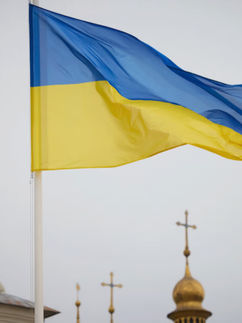War Path of Calculated Strategy: North Korea's 2016 Nuclear Dash
- Benjamin Zimmer
- Jul 7, 2016
- 4 min read
Updated: Feb 1, 2022

Benjamin Zimmer
During the first four months of 2016, North Korea embarked on a controversial nuclear dash. This included its fourth nuclear test on January 6, the launch of the Kwangmyongsong-4 satellite on February 7, and the test launches of two Musandan medium range ballistic missiles in April. Pyongyang also released various threats of nuclear war against the world, mainly the United States and South Korea. Pyongyang’s dash left the international community seeking an explanation for the rash behaviour, with many international analysts seeing it simply as a strong defiance of the international sanctions, and restrictions, levied against North Korea. However, Kim Jong-un, the leader of North Korea, has used this nuclear dash as a way to consolidate his internal power before the Seven Worker’s Party Congress, which was held on May 6.
The Worker’s Party of North Korea has held power in the reclusive nation for most of its history. Moreover, the Worker’s Party Congress has acted as the vessel for drastic domestic policy changes enacted by the ruling party. Since the first congress was held in 1946, the majority of domestic political change has come from the party congress; the creation of the state bureaucratic system was the result of the first congress in 1946, and in 1970 the congress was used to institute an ambitious 6-year economic plan. In the final congress chaired by Kim Il-sung in 1980, he proclaimed his son, Kim Jong-il, as his successor. After 1980 and Kim Jong-il’s rise to power, however, North Korea would not hold another congress, as Kim Jong-il did not see the need for the event. As in the past, the Seventh Worker’s Party Congress was used to make domestic political changes, such as electing Kim Jong-un to the position of Chairman of the Worker’s Party of Korea.
Kim Jong-un rose to power as a young, untested man who, unlike his father, was not granted any formal training in running the day to day operations of North Korea. He was also not announced as successor through a formal ceremony. Due to his lack of military and political experience, Kim Jong-un has been pressured to showcase his political dominance in the domestic realm. His hairstyle, Mao suit, and the reintroduction of formal events – formally delivering a New Years Speech ever January 1st, maintaining a strong public presence and even holding the Worker’s Party Congress – all work to recreate the essence of his grandfather, Kim Il-sung, who many North Koreans view as the benevolent, populist leader who sparked the North Korean revolution and cared for the people above all else.
Another way Kim Jong-un has attempted to showcase his political leadership is through his adaption of the byongjin policy, a policy focusing on simultaneous nuclear and economic advancement. Through this policy, Kim seeks to gain political legitimacy by establishing a strong military deterrent, in the form of powerful, nuclear weapons. The policy also aims to improve the economic situation of North Korea, despite the heavy sanctions levied against it by the United Nations, the United States and other international agencies and states.
It is within this framework that the nuclear dash earlier this year must be analysed. For Kim Jong-un, the nuclear deal was a meticulously planned strategy to solidify his position as the leader of North Korea, following his own byongjin policy.
On January 6, 2016, North Korea tested its fourth nuclear weapon, followed quickly by an announcement, released by the Korean Central News Agency (KCNA), stating that North Korea had tested a “hydrogen bomb of justice.” This claim was quickly disputed by international nuclear experts, saying the yield for the test was too low for a hydrogen bomb. However, this announcement was not targeted towards the outside world. It was meant to show the people of North Korea advancement in the domestic nuclear weapons program, emphasising the growing strength of the nation, in spite of the international sanctions supposedly restricting the program.
North Korea’s launch of the Kwangmyongsong-4 satellite also fits into this paradigm. For years Kim Jong-un has promoted scientific development in North Korea, building a new age mission control facility which was used to track the launch of Kwangmyongsong-4, and building an entire street full of impressive housing – by North Korean standards – for his most loyal scientists. Kwangmyongsong-4’s successful launch exemplifies this push by replicating what other advanced nations have done: successfully launching a satellite into space.
The April tests of several Musandan Missiles assist in advancing Kim’s strategy in the same method as the nuclear test; they showcase the strength of the North Korean military, in spite of international sanctions. This was the first time since its 2010 unveiling that a Musandan missile had been tested. Though the missile test failed, it showed Kim Jong-un’s desperate effort to expand his military capabilities. A fully functioning Musandan missile would place several American military bases in the pacific within range of a North Korean strike. This capability is unlikely to ever be used offensively, but simply having the ability is considered an achievement for the North Korean leader.
To truly understand the rationality behind the North Korea nuclear dash of 2016, internal motivations cannot be discarded from the analysis. When examined as a defiant set of measures meant to disrupt the political landscape surrounding the Korean peninsula, it is hard to see exactly what motivated Kim Jong-un to further provoke the world. However, when examined as a way to show advancement in one aspect of the byongjin policy, that aspect being nuclear advancement, it is easy to understand why the dash continued, despite harsh sanctions and condemnation from many internal and external actors. Kim Jong-un used the dash as a way to showcase his political and military strength so he could take the highest office in the country – Secretary of the Worker’s Party of Korea – from a position of total dominance and irrefutable strength.

















Comments